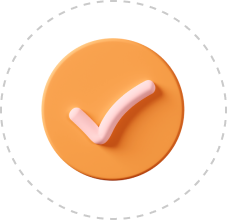Today, social networks are a fundamental tool for any company seeking to increase its visibility, interact with its audience and promote its products or services. However, along with all the opportunities they offer, come significant security challenges. Maintaining the integrity of your company's social media accounts and data is essential to avoid potential problems. Here are 10 key tips for strengthening your company's social media security.
1. Establishes a robust security policy
The foundation of any effective social media security strategy begins with the creation and implementation of a solid security policy. This policy will serve as a set of guidelines and rules that all employees who manage the company's social media accounts must follow. Here are more details on how to create and enforce this policy:
-
- Identifies those responsible for security
It should be clear who is responsible for implementing and enforcing the social media security policy. This may be specific members of the digital marketing team, the information technology (IT) team or a person specifically designated for this purpose.
-
- Define roles and responsibilities
Each team member should know his or her role in managing social media accounts. This may include assigning someone as lead account manager, another as content manager, and others as contributors.
-
- Establishes clear procedures
Document the procedures to be followed in specific situations. For example, what to do in the event of a security breach? How should passwords be created and stored? What is the process for approving and scheduling publications?
-
- Creates guidelines for content
Define guidelines for the type of content that can be posted on the company's social networks. This includes appropriate topics, language, tone of voice and handling of negative comments or messages.
-
- Educate employees
Provide regular security policy training to all employees who have access to social media accounts. Make sure they understand the security implications and the importance of following the rules.
-
- Update and review periodically
Online security is constantly evolving. Therefore, it is critical to regularly review and update your security policy to keep up with the latest threats and best practices.
-
- Internal communication
Encourage open communication within the team. Members should feel comfortable reporting any suspicious activity or security policy violations.
-
- Compliance and consequences
It is important to establish clear consequences that employees will face in the event of a violation of the security policy. This may include disciplinary measures or even legal action if gross negligence is revealed.
-
- Risk assessment
Conducts a periodic risk assessment to identify new threats or vulnerabilities that may arise in the company's social media environment.
2. Use strong passwords
Las contraseñas son la primera línea de defensa en la protección de tus cuentas de redes sociales. Para garantizar la seguridad, es fundamental emplear contraseñas sólidas y únicas para cada plataforma. Evita contraseñas obvias como «123456» o «contraseña». En su lugar, opta por combinaciones de letras mayúsculas y minúsculas, números y caracteres especiales. Utilizar una gestión de contraseñas confiable puede ayudarte a generar y almacenar contraseñas complejas de forma segura. Además, recuerda cambiarlas periódicamente y nunca compartirlas por correo electrónico o mensajes de texto. Una contraseña robusta es la primera línea de defensa contra posibles amenazas en línea.
3. Enable two-factor authentication.
Two-factor authentication (2FA) is an additional layer of security that significantly strengthens the protection of your social media accounts. By enabling 2FA, you add a second level of verification in addition to your password to access your account. This typically involves the use of a temporary security code that is sent to your mobile device or email. Enabling 2FA is a critical measure, because even if someone discovers your password, they will not be able to access your account without the second authentication factor.
To set up 2FA, first, go to the security settings of each social media platform you use. Generally, you will find the option to enable 2FA in the security or login section. Often, you can choose between receiving a code via text message, an authentication app or a physical security key. The choice of method depends on your preferences and desired level of security.
Remember that 2FA is not only essential for protecting your social media accounts, but it is also a recommended practice for all online accounts you value, from email accounts to online banking services. Implementing 2FA is a simple but powerful step to strengthen online security and ensure that your social media accounts are better protected against cyber threats.
4. Supervises and responds quickly
Constant monitoring of your social media accounts is essential to detect any unusual activity or potential threats. Use monitoring tools and alerts to be aware of any changes in activity on your profiles. This includes tracking new followers, comments on posts and direct messages. A quick response is essential if suspicious activity is identified. If you notice anything out of the ordinary, such as inappropriate posts or unauthorized activity, act immediately. Investigating and addressing security issues in a timely manner can help you avoid further damage and protect the integrity of your enterprise social networks.
5. Limits access
Reducing access to your company's social media accounts is a key strategy for strengthening security. Only grant access to those employees who really need to be involved in the management of social networks. The less access other employees have, the lower the risk of exposure to threats. In addition, consider enforcing permission levels and roles within social media platforms. This ensures that each team member has only the access necessary to carry out their responsibilities, thus minimizing any potential security breaches. By limiting access appropriately, you can significantly increase the protection of your social media accounts and ensure that only authorized personnel can make changes or interact with your online audience.
8. Supervises the permissions of third parties
Monitoring and controlling the permissions granted to third-party applications or services that manage your social networks is essential. Periodically review the list of connected applications and remove access to those that are no longer needed or trusted. By limiting access to third-party applications and maintaining strict control over authorizations, you can prevent potential security threats and protect the integrity of your accounts.
9. Perform regular backups
Backups are your safeguard against data loss on social media. Establish a plan to regularly back up your content and settings on social media platforms. This includes posts, images, videos and any relevant information. Backups allow you to recover valuable data in the event of a security breach, human error or any other unexpected problem. Make sure your backups are stored securely and updated regularly to keep your information protected.
10. Establish an incident response plan
Despite your best security efforts, incidents can occur at any time. It is crucial to have a well-developed incident response plan. This plan should detail how potential security breaches on your company's social media will be identified, investigated and resolved. It should also include a communication protocol for notifying internal and external stakeholders in the event of a security breach. A solid response plan will allow you to act quickly and efficiently in any security situation, thus minimizing the impact on your company's reputation and the security of your online data.
Remember that social media security is an ongoing responsibility. Stay on top of the latest threats and best practices to ensure that your company is always one step ahead in protecting its online presence.
We hope these 10 tips are useful and you can put them into practice so that you never have to go through a bad experience and lose all the work and customers you have achieved through your company's social networks.
We invite you to read the articles of our blogwhere you will find information on different topics and resources that can enhance your sales capabilities, communication, task simplification, safety and much more! Visit us at Clickpanda.com.





 0 comments
0 comments